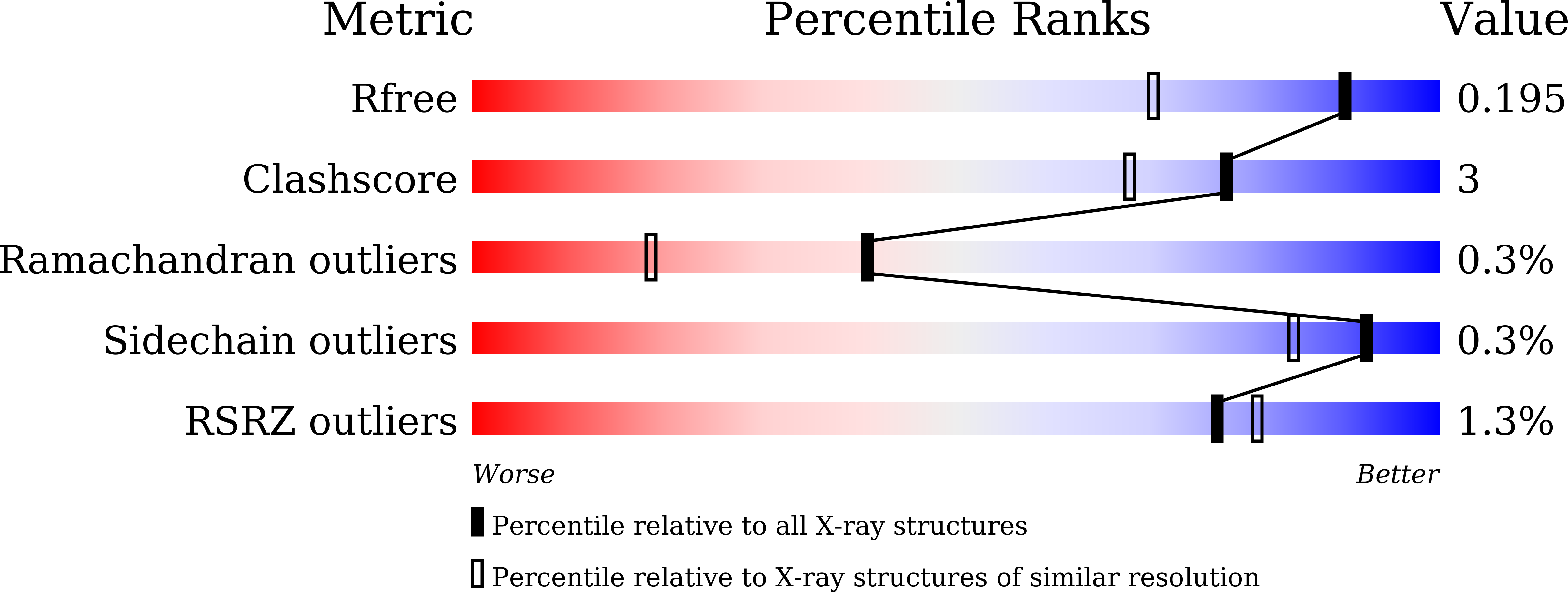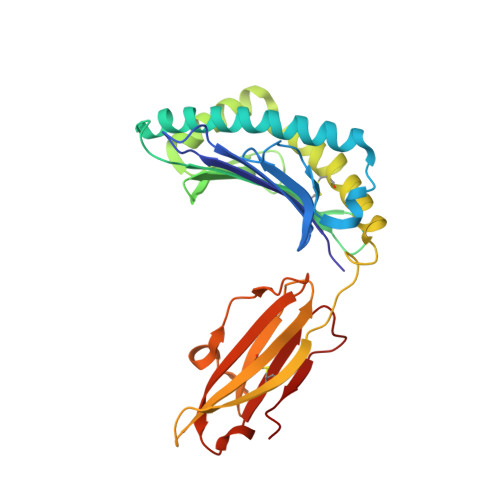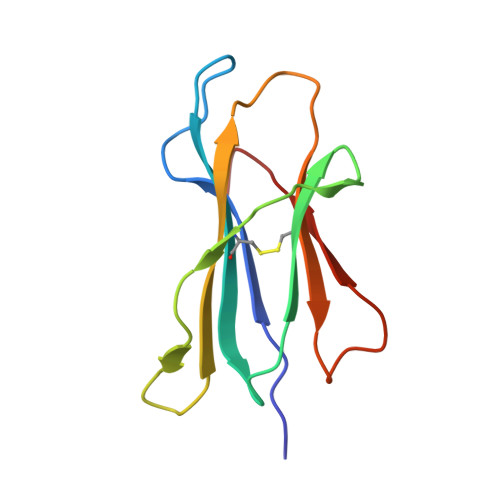Functional and structural characteristics of HLA-B*13:01-mediated specific T cells reaction in dapsone-induced drug hypersensitivity.
Jiang, H., Wang, C.W., Wang, Z., Dai, Y., Zhu, Y., Lee, Y.S., Cao, Y., Chung, W.H., Ouyang, S., Wang, H.(2022) J Biomed Sci 29: 58-58
- PubMed: 35964029
- DOI: https://doi.org/10.1186/s12929-022-00845-8
- Primary Citation of Related Structures:
7YG3 - PubMed Abstract:
Severe cutaneous adverse drug reactions (SCARs) are a group of serious clinical conditions caused by immune reaction to certain drugs. The allelic variance of human leukocyte antigens of HLA-B*13:01 has been strongly associated with hypersensitivities induced by dapsone (DDS). T-cell receptor mediated activation of cytotoxic T lymphocytes (CTLs) has also been suggested to play an essential role in pathogenesis of SCARs. However, HLA-B*13:01-DDS-TCR immune synapse that plays role in drug-induced hypersensitivity syndrome (DIHS) associated T cells activation remains uncharacterized. To investigate the molecular mechanisms for HLA-B*13:01 in the pathogenesis of Dapsone-induced drug hypersensitivity (DDS-DIHS), we performed crystallization and expanded drug-specific CTLs to analyze the pathological role of DDS-DIHS. Results showed the crystal structure of HLA-B*13:01-beta-2-microglobulin (β2M) complex at 1.5 Å resolution and performed mutation assays demonstrating that I118 or I119, and R121 of HLA-B*13:01 were the key residues that mediate the binding of DDS. Subsequent single-cell TCR and RNA sequencing indicated that TCRs composed of paired TRAV12-3/TRBV28 clonotype with shared CDR3 region specifically recognize HLA-B*13:01-DDS complex to trigger inflammatory cytokines associated with DDS-DIHS. Our study identified the novel p-i-HLA/TCR as the model of interaction between HLA-B*13:01, DDS and the clonotype-specific TCR in DDS-DIHS.
Organizational Affiliation:
Department of Mycobacterium, Jiangsu Key Laboratory of Molecular Biology for Skin Diseases and STIs, Institute of Dermatology & Hospital for Skin Diseases, Chinese Academy of Medical Sciences & Peking Union Medical College, Nanjing, China.
















